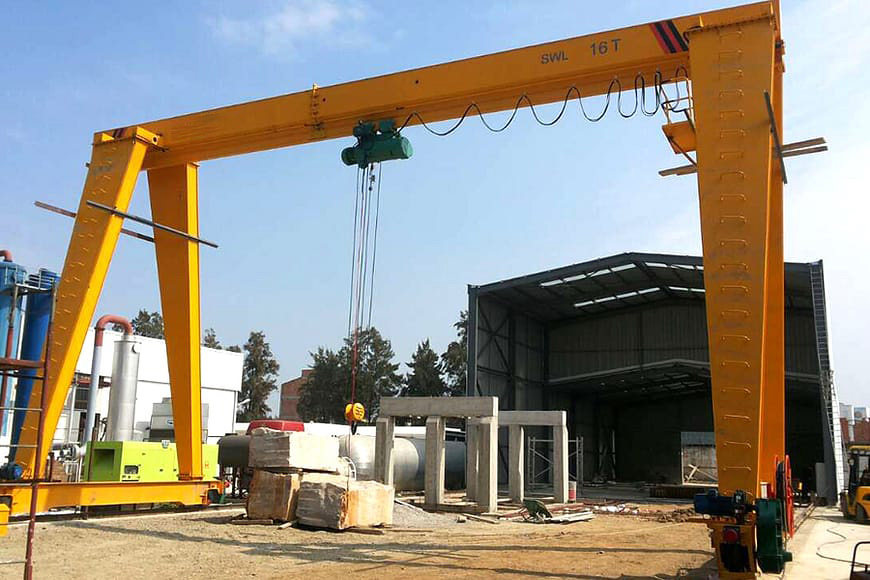In the fields of industrial production and logistics, gantry cranes serve as crucial material handling equipment, and their procurement process requires special attention to two core parameters: height and span. Scientific and reasonable design not only ensures the safe operation of the equipment but also significantly improves operational efficiency.

Height design is a primary consideration in gantry crane selection. It is necessary to accurately measure the height of the lowest obstacles in the working area, including ceilings, pipelines, and beams. The overall height should be calculated from the ground to the top of the I-beam, while the under-beam height needs to subtract the thickness of the I-beam itself.
The calculation of the hook's actual operating height is even more critical. The slack of the lifting slings must be taken into account, and sufficient headroom should be reserved. The selection of chain length should ensure that the hook can reach all required working positions, while maintaining a certain safety margin.
Span design directly affects the working range and operational efficiency of a gantry crane. The total width includes the space occupied by safety stoppers, while the actual usable width needs to exclude this part of the space. During the design process, full consideration should be given to the size of materials, weight distribution, and handling paths.
The matching of the load system is equally important. The principle of gradual compatibility between the hoist, trolley, and crane capacity must be followed. Neither the situation of "a small horse pulling a big cart" (insufficient capacity) nor resource waste caused by over-design should be allowed.
The design and use of gantry cranes must strictly comply with relevant safety norms. The OSHA 1910.179 standard has clear requirements for anti-sway devices and overload protection, while the ASME B30 series specifies design and manufacturing standards.
Daily maintenance and inspection cannot be ignored either. Regular checks should be conducted on track wear, weld integrity, and the reliability of the electrical system to ensure the equipment is always in good condition. Professional training for operators is also a key part of safety assurance.
In practical applications, problems such as insufficient headroom and improper chain length are often encountered. For these situations, solutions include re-measurement, selection of specially designed components, or structural adjustments.
Problems related to span are mostly manifested in limited working range or mismatched components. Optimizing the design of stoppers, adopting cantilever structures, or re-planning material stacking are all effective solutions.
Through scientific height and span design, enterprises can obtain gantry cranes that best suit their own needs. This not only ensures safe production but also improves material handling efficiency and reduces operating costs.
It is recommended that enterprises form a professional team during procurement, conduct in-depth communication with qualified manufacturers, and carry out sufficient on-site tests. A sound training and maintenance system is also important to give full play to the equipment's performance advantages.




